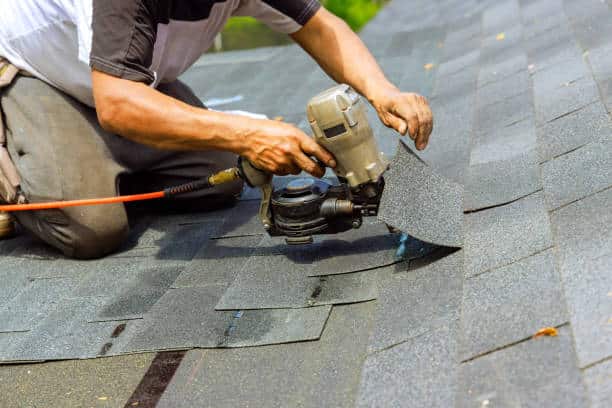Emergency Roof Repair Tips Every Homeowner Should Know
When unexpected damage strikes, roof repair becomes a top priority. A sudden leak, missing shingles, or storm damage can escalate quickly, threatening your home’s structure and comfort. Knowing how to respond in these situations can prevent minor issues from becoming major headaches.
Whether it’s a small patch-up or a more complex repair, understanding what steps to take immediately can save you time, money, and stress. Acting fast and knowing what to look for ensures your home stays safe, secure, and well-protected.
Why Quick Roof Repair Action Matters After a Storm
Homeowners in Arlington, VA are no strangers to unpredictable weather. From heavy rain and strong winds to occasional hail, the area’s climate can take a toll on your roofing system. Acting quickly after a storm is essential to minimize damage and ensure timely roof repair before small issues escalate.
When you notice signs of trouble—like loose shingles, water stains, or sagging areas—schedule an inspection with reliable roofing contractors as soon as possible. Trusted professionals in Arlington, VA can assess the extent of the problem and recommend safe, cost-effective roof repair solutions to keep your home protected.
1. Inspect for Visible Damage First
Once it’s safe to go outside, take a look at your home from ground level. Check for visible signs of damage such as missing shingles, dented flashing, or fallen debris. You don’t need to climb up—binoculars or a drone camera can help you see better.
Prompt inspection helps you understand the urgency of the roof repair needed and provides clear evidence for insurance claims.
2. Contain Leaks Inside Your Home
If water starts dripping indoors, your first step should be damage control. Place buckets or containers to catch water and protect floors or furniture. Use towels or tarps to cover valuable items.
Containment doesn’t stop the leak—it just buys you time until roofing experts near me can arrive. Keeping the area dry helps prevent mold and ceiling damage.
3. Temporary Patching and Tarping
If the weather allows and it’s safe, you can apply a temporary patch. Plastic sheeting or heavy-duty tarps work well for short-term fixes. Secure them tightly to keep out moisture and debris.
This step is especially helpful after strong winds or fallen branches. A temporary patch reduces the risk of further damage before quality roof repair professionals step in.
4. Avoid DIY Fixes for Major Damage
While quick patches are fine, extensive damage should never be handled alone. Climbing onto a compromised surface is risky. Always wait for roofing specialists who have the right tools, safety gear, and expertise to repair the issue properly.
Professionals can identify hidden problems, such as weakened support beams or damaged insulation, that homeowners might overlook.
5. Check Gutters and Downspouts
Clogged or damaged gutters can worsen leaks by allowing water to pool near the edges. Clear out debris and ensure water flows freely. If sections are loose or bent, reattach them carefully.
A local roofing company can also inspect the drainage system to make sure water moves away from your home efficiently, preventing future problems.
6. Document Everything for Insurance
After emergency damage, take detailed photos and videos of the affected areas. Record the date and describe what happened. This documentation helps with insurance claims and ensures you get fair coverage for your roof repair costs.
Keep any receipts from temporary fixes or inspections—you may be reimbursed later.
7. Choose Experienced Roofing Professionals
Not all contractors have equal expertise. Look for roofing contractors with a proven record in storm recovery, licensing, and local references. Read reviews and ask about warranties for both materials and labor.
An experienced roofing specialist knows how to handle emergencies efficiently while ensuring the structure’s integrity.
8. Prevent Future Damage
Once your roof repair is complete, it’s wise to take preventive measures. Schedule annual inspections to detect minor issues early. Trim nearby trees to avoid falling branches, and clean gutters regularly to ensure proper water flow.
Homeowners in Arlington, VA, benefit from regular maintenance due to fluctuating weather conditions. Preventive care can extend your roof’s lifespan by years.
9. Prioritize Safety Above All
Even if you’re tempted to handle things yourself, safety always comes first. Avoid stepping on wet or damaged areas and never climb onto a sloped surface without the right equipment.
Certified professionals from Ralda Roofing recommend staying indoors until experts assess the situation. Protecting your safety is always more important than rushing repairs.
Final Thoughts
Emergencies can happen without warning, but being prepared makes all the difference. Knowing how to assess, contain, and communicate with roofing contractors ensures that your home stays protected when disaster strikes.
For homeowners in Arlington, VA, understanding these practical steps can prevent costly long-term damage and help maintain the structural integrity of your home. Partnering with reliable roofing specialists guarantees high-quality workmanship and peace of mind—no matter what nature brings.
FAQs
1. What should I do first after storm damage?
Inspect from the ground, document visible issues, and contact roofing experts near me for an immediate evaluation.
2. How can I tell if my roof needs urgent repair?
Look for leaks, missing shingles, or sagging areas—signs that demand quick professional attention.
3. Is it safe to climb up myself to check the damage?
No, always avoid climbing onto a damaged structure. Call a local roofing company instead.
4. How soon should I schedule a repair?
Within 24–48 hours after noticing damage, especially in rainy or windy conditions.
5. Can emergency repairs prevent a full replacement later?
Yes, timely quality roof repair can extend your system’s life and reduce replacement costs significantly.


